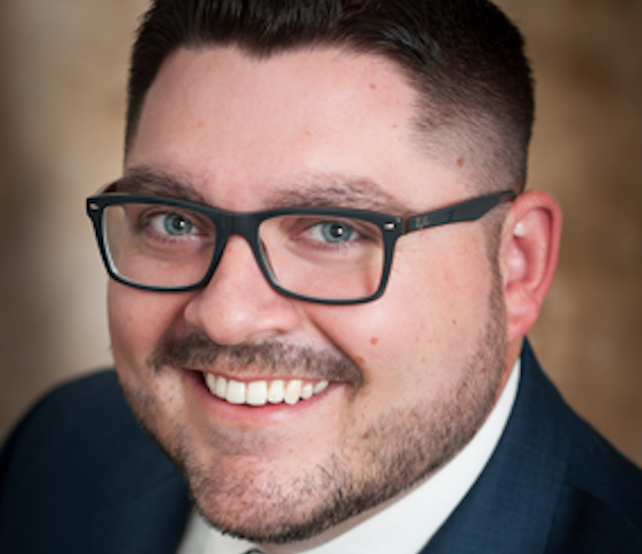This is an unprecedented time, both personally and professionally. While many of us adjust to a new normal of video conferences and dining tables-turned-offices, community banks and credit unions face market disruptions. To help our customers address this uncertainty, I sat down with Josh Turnbull, Vice President of Community Banks and Credit Unions for TransUnion.
Question 1: What reactions are you seeing in the market?
Broadly speaking, we are seeing two very different types of reactions.
Some institutions are pulling back — they’re moving from growth to protecting assets, tightening lending standards, pulling back on marketing, and entering survival mode. The focus is on weathering this storm and resuming business on the other side of it.
Other institutions see this as an opportunity — albeit wrapped in challenges — and recognize a perhaps once-in-a-lifetime moment to make an impact while doubling down on their mission of serving their communities. These institutions will focus on how to serve members or customers with changing financial circumstances; they’ll evolve their service strategies. While doing that, they’ll also ensure they are managing new risks posed by the conditions we’re navigating.
Question 2: With so many people facing income volatility and uncertainty, how are community institutions supposed to serve them?
This is where understanding who members and customers are — and their potential needs — becomes so important. Many people are making day-to-day decisions right now; they’re not spending time thinking about whether or not they have the right financial product. Decisions about how to navigate a changing financial circumstance are overwhelming for many consumers. We know that 65% of consumers are more likely to consider an offer if it’s specific to their financial needs and goals in normal times.[1]
Pulling back on fees is a great way to demonstrate flexibility and to keep a few more dollars in peoples’ pockets in times of need. In addition to measures like that, we expect many institutions to take more concerted efforts to provide flexible solutions to help people in their community.
Lenders that want to make an impact are taking a proactive look at their portfolios and identifying where early outreach is the best option. Many are also segmenting and prioritizing their portfolios for effective management in the weeks and months ahead. They’re looking for people with mortgages who could benefit from a lowered monthly payment or may have untapped equity to refinance and firm up monthly obligations. They’re evaluating credit card portfolios for people who would benefit from a line increase. They’re thinking about rolling out short-term liquidity loans or other vehicles cited in a recent NCUA letter to those who would benefit and not be overburdened.[2]
Question 3: In some cases, extending more credit isn’t the right answer. What then?
As the former head of a regulatory agency once told me bluntly, “you don’t solve an income problem with a credit product.” The byproduct of financially struggling communities will be an increase in delinquencies. But there are tactics community institutions can take to minimize and manage through that.
First, minimize the number of consumers that find themselves behind on their bills. If an institution has good mechanisms in place to understand their customers and to spot signs of financial stress — and spot it early — they are in a good position to be proactive. Personally, I’m much more likely to respond to an offer to skip a payment or restructure a loan than I am to call a phone number and explain that I’m suffering financially and ask about options.
For those customers and members who do miss payments, ensuring that you have accurate contact information allows you to quickly make contact and avoid even further delinquencies. And having insights on who to contact and who to prioritize gives you the opportunity to help more people avoid serious financial situations that could have lasting repercussions.
Question 4: How are institutions adapting service strategies?
The large institutions with armies of developers and IT budgets in the billions can seem more than a little daunting as community institutions think about digital strategies. But there are very real and easy ways to support existing members or customers. In these uncertain times, the need to do that has never been more important.
On the servicing front, institutions are ensuring that members have the ability to conduct day-to-day business — such as making deposits, transferring money — through mobile apps and sites, and getting more people comfortable with these tools. The good news is that these capabilities are nearing ubiquity.
For most community institutions, the account-opening front still lags and relies on in-person processes or manual decisions. Community institutions are accelerating timelines on projects to stand up digital account-opening capabilities, present customers and members with qualified offers, and remove some of the manual processes that rely on heavy in-person staffing. Innovative approaches are allowing institutions to be the responsive partner consumers are looking for.
Question 5: We’ve seen spikes in fraud following natural disasters. Should we expect the same now?
If there’s a silver lining in what we’re all experiencing, it’s the many examples of generosity and communities supporting themselves. Unfortunately, there’s a sinister element that sees times like these as an opportunity to escalate fraud. People are distracted and nervous. Businesses are focused on other things. And community institutions are trying to push the boundaries of their faceless channels.
This is a time when community institutions need to take a serious look at the fraud controls in place and ask if they’re effective. Do they detect fraud now? Do they protect the identities of those in the community in a vulnerable time? Do they do an adequate job as more business shifts to digital? Do they require significant manual intervention and back office processes, tying up staff teams that could be focused on helping members or customers? If not, now is the time to find the right partner to help.
This is a stressful and trying time — and the thousands of community banks and credit unions that are the lifeblood for small businesses and consumers find themselves in uncharted waters. However, because of a deep rooting in communities, they know their north star. Those who act quickly to adapt and serve the changing needs of their communities are likely to look back on this time proud of how they navigated unprecedented times. More importantly, they can see how they were able to serve the needs of their community and emerge as stronger, more competitive institutions.
Sources
[1]TransUnion survey
[2]https://www.ncua.gov/files/letters-credit-unions/20-cu-02-ncua-actions-related-covid-19.pdf







